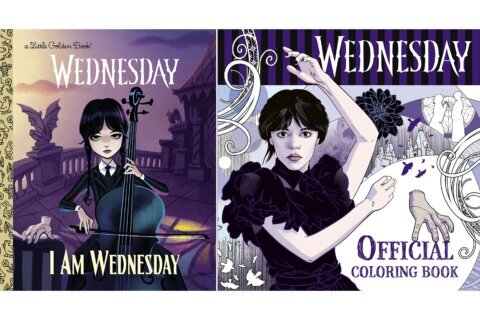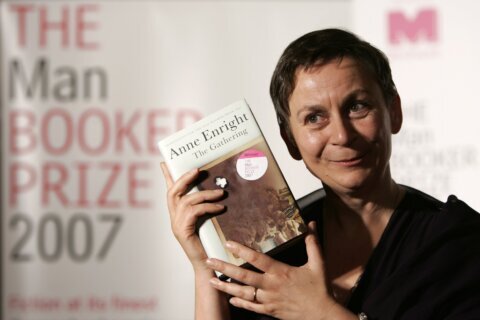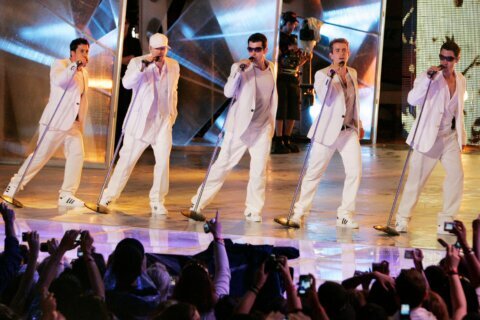WASHINGTON — Don’t be late — for a very important date.
The Washington Ballet’s “Alice in Wonderland” comes to the Kennedy Center from May 6-17.
“It’s going to be a rollicking ride,” says Septime Webre, Artistic Director of the Washington Ballet and choreographer for “Alice in Wonderland.” “It’s just a really adventurous ride down the rabbit hole, and my advice to audiences, if they come, fasten your seat belts, it’s going to be quite a ride.”
The rollicking was ironically sparked by relaxation on the beaches of Hawaii, as Webre read the Lewis Caroll books “Alice’s Adventures in Wonderland” (1865) and “Through the Looking Glass” (1871).
“I read it one bucolic afternoon on the North Shore of Oahu. … And it just was the most amazing experience,” Webre says. “I knew it could become something very physical. … It’s a beautiful story, but it’s also really flamboyant and quite outrageous.”
Webre worked with Cirque du Soleil designer Liz Vandal to create the costumes for the famous characters, from the White Rabbit to the Cheshire Cat, and from the Mad Hatter to the Queen of Hearts.
“The idea was period silhouettes filtered through a high-fashion lens with a bit of outrageous circus to boot,” Webre says of the laser-printed outfits. “All of the fabrics for the 120 costumes were actually white and everything is printed. … Fabric technology is at the forefront of theatrical design. This same person does costumes for Broadway … but she also laser prints fabric to cover giant Boeing jets for the Army in camouflage, so it’s a really amazing technology.”
The character designs are also infused with pop culture references in their wardrobe and music.
The fish and the frog are modeled after David Bowie and Elton John, while Tweedle Dee and Tweedle Dum are modeled after Starsky and Hutch. During rehearsals, the latter pair are lovingly called Tweedle Dumb and Tweedle Dumber, creating the ultimate blend of highbrow and lowbrow.
“That’s the post-modern condition. It’s how we live. We like it uptown and we like it downtown,” Webre says. “Ballet is, in so many ways, based on earnestness and tragedy and real emotions feelings, which is wonderful, but that means belly laughs are really rare. … I grew up in a family of eight brothers and we’re all still kind of like 12-year-old guy humor. So I’ve encoded ‘Alice in Wonderland’ with funny moments that just make me laugh.”
Along with the pop culture nods, there’s also some serious artistry on display.
Japanese dancer Maki Onuki shines in the lead role of Alice in her tenth year with Washington Ballet.
“She’s this unusual technician who dances with such fearlessness,” Webre says. “She’s got an amazing world-class technique. … She’s just got this amazing jump that comes out of nowhere and almost looks like she’s completely effortless, and she’s got a lot of moxie too, so it was a real natural fit.”
The Caterpillar is played by an Armenian ballerina, who is lifted aloft by six men so that she never touches the ground throughout the dance, worming her way through the space.
Dancer Luis R. Torres, who plays Alice’s father, the King of Hearts and the Cheshire Cat, says his favorite number is the trial scene, where Alice is captured and surrounded by a deck of cards.
“The whole company is on stage,” Torres says. “It’s like organized chaos, but you can see each character come to life, even though everybody’s there at once. The music, the movement, the chaos, the story comes to fruition in that scene, and it’s very, very colorful.”
While the dancing is trippy and the costumes lavish, the sets are minimalist.
“That’s one of the interesting evolutions of the ballet world,” Webre says. “19th century scenic design … assumed the audience needed every piece of information. In fact, audiences are really smart. They don’t need a lot of information. It’s more exciting for them to be involved.”
So, in the Queen of Hearts’ rose garden, the stage sits inside of a 40×30-foot rose in full bloom.
“It’s a single, big, theatrical gesture that makes you understand where you are, but also draws you in in a way that a literal interpretation might not,” Webre says.
The minimalist sets also allow the dancers plenty of room to fly, using the wire technology of the company Flying By Foy, which developed it decades ago for Broadway’s “Peter Pan.” The wires allow Alice to fly around during the time travel sequences, but the mechanics of the magic remain a secret.
“I actually can’t tell you exactly how it works,” Webre jokes,” Or I would have to kill you.”
Off with our heads!
Hear the full interview below:








